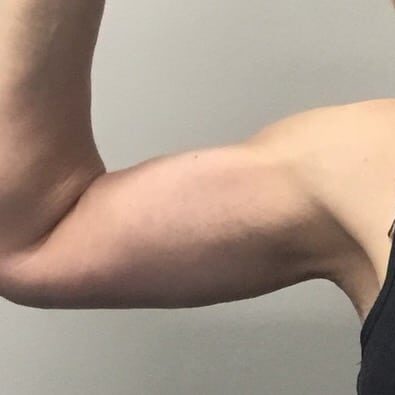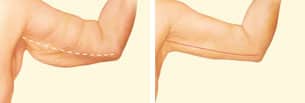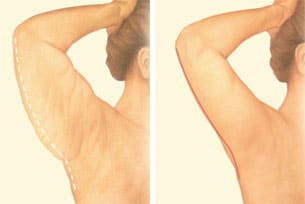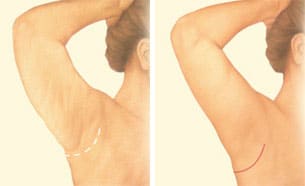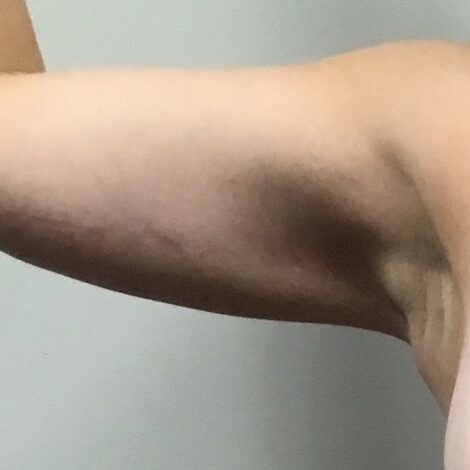Comprehensive Guide to Brachioplasty (Arm Lift Surgery)
What Is Brachioplasty?
Brachioplasty, also known as an arm lift, is a surgical procedure designed to remove excess skin and fat from the upper arms. The goal is to improve contour and create a more toned, youthful appearance. This procedure is especially beneficial for individuals who have experienced significant weight loss, aging-related skin laxity, or genetic predisposition to sagging skin in the upper arm area.
Why Choose Brachioplasty?
Many patients pursue Brachioplasty because:
-
Diet and exercise alone cannot tighten stretched skin.
-
The appearance of “bat wings” or hanging skin can cause self-consciousness.
-
Clothing options (like sleeveless tops) may feel limited.
-
After massive weight loss, skin elasticity does not always return.
By tightening the arm tissues and removing redundant skin, Brachioplasty can restore balance and proportion to the body.
Ideal Candidates for Arm Lift Surgery
You may be a good candidate for Brachioplasty if you:
-
Are at a stable and healthy weight
-
Have loose, sagging skin along the upper arms
-
Do not smoke (or are willing to quit before and after surgery)
-
Are in good overall health without medical conditions that impair healing
-
Have realistic expectations about surgical outcomes and scarring
Types of Brachioplasty Procedures
There are several surgical approaches depending on the extent of skin laxity and patient goals:
1. Mini (Limited-Incision) Brachioplasty
-
Suitable for patients with minimal skin excess. (typically not a dramatic change)
-
Incision is placed in the armpit (axilla).
-
Shorter scar and quicker recovery.
2. Traditional (Standard) Brachioplasty
-
Ideal for moderate to severe sagging.
-
Incision runs from the armpit to the elbow on the inside of the upper arm. It can also be on the back of the arm depending on the distribution of excess skin.
-
Allows for significant skin tightening and fat removal.
3. Extended Brachioplasty
-
For patients with massive weight loss where excess skin extends to the chest or lateral torso.
-
Provides dramatic reshaping but involves a longer incision that extends onto the lateral chest wall.
4. Brachioplasty with Liposuction
-
Combines liposuction for fat reduction and skin excision for tightening. Dr. Medalie always uses liposuction as an adjunct to his procedure
-
Helps achieve a smooth, contoured arm.
The Brachioplasty Procedure: Step-by-Step
-
Anesthesia: Performed under general anesthesia or intravenous sedation.
-
Incision: Your surgeon marks and creates incisions along the inner or back of the arm.
-
Fat and Tissue Removal: Liposuction may be used to remove excess fat; loose skin is excised.
-
Tightening and Contouring: Underlying supportive tissues are reshaped with internal sutures.
-
Closure: Skin is redraped smoothly and incisions are closed with sutures or surgical adhesive.
-
Dressings and Recovery: Compression garments help reduce swelling and support healing.
Recovery After Brachioplasty
-
Downtime: Most patients return to light activities within 1–2 weeks.
-
Swelling and Bruising: Common for the first few weeks.
-
Compression Garment: Worn for 4–6 weeks to aid contour and minimize swelling.
-
Scarring: Incision scars fade over time and can often be concealed along the arm’s inner contour.
-
Final Results: Visible within 3 months, with continued improvement for up to a year.
Risks and Potential Complications
Like all surgeries, Brachioplasty carries some risk. Potential complications include:
-
Scarring (permanent but fades with time)
-
Temporary numbness or tightness
-
Infection or bleeding
-
Asymmetry or contour irregularities
-
Seroma (fluid buildup)
Choosing a board-certified plastic surgeon with extensive experience such as Dr. Medalie significantly reduces the likelihood of complications.
Brachioplasty Results and Longevity
Results are typically long-lasting if patients maintain a stable weight and active lifestyle. Aging will naturally affect skin elasticity, but improvements in contour are enduring. Patients often report boosted confidence and wardrobe freedom after the procedure.
Brachioplasty vs. Non-Surgical Arm Tightening
| Feature | Brachioplasty (Surgical) | Non-Surgical Options (Radiofrequency, Ultrasound, Laser) |
|---|---|---|
| Skin Removal | Yes | No |
| Fat Reduction | Yes (with liposuction) | Minimal |
| Downtime | 1–2 weeks | None to several days |
| Results | Dramatic, long-lasting | Mild to moderate improvement |
| Ideal Candidates | Moderate–severe laxity | Mild laxity only |
Cost of Brachioplasty
Dr. Medalie typically performs the brachioplasty procedure at an outpatient surgery center. The cost varies depending on the length of the surgery but runs around $7500-8500. this includes the surgeon's fee, anesthesia and facility fee.
Frequently Asked Questions About Brachioplasty
Scars are typically placed along the inner arm and fade over time. Most patients find them acceptable compared to the improvement in contour. When a patient does not have significantly sagging skin then the scars may be more visible than the loose skin and the patient has to consider the downside of scars versus the upside of modestly tightened arm skin.
Yes. It’s common to combine with liposuction, tummy tuck, or breast lift as part of a post-weight-loss body contouring plan.
Most patients experience mild to moderate discomfort, easily managed with prescribed medications.
Light exercise may resume after 2–3 weeks, but avoid heavy lifting for at least 6-8 weeks.
Conclusion: Is Brachioplasty Right for You?
If you’re struggling with loose, hanging upper arm skin that doesn’t respond to diet and exercise, Brachioplasty can restore firmness and proportion. Choosing Dr. Medalie ensures a safe procedure and natural-looking results.
*Plastic surgery results can vary from patient to patient and are not guaranteed.

